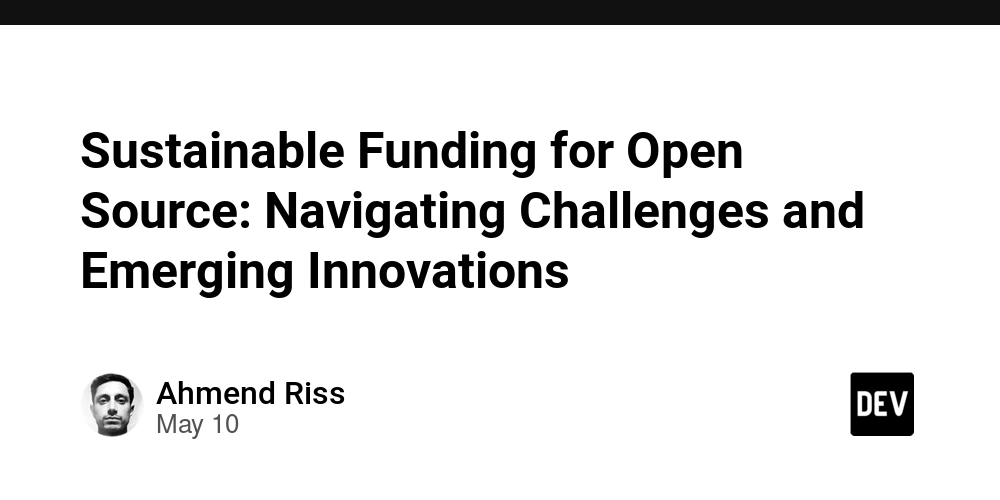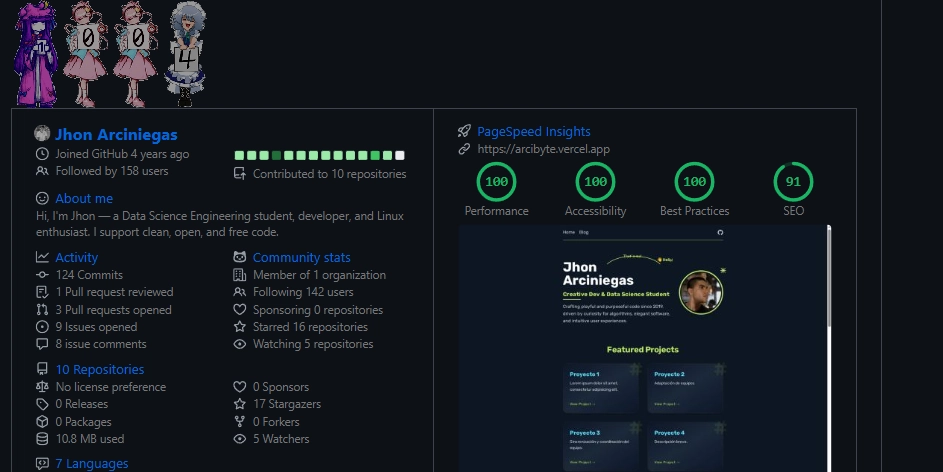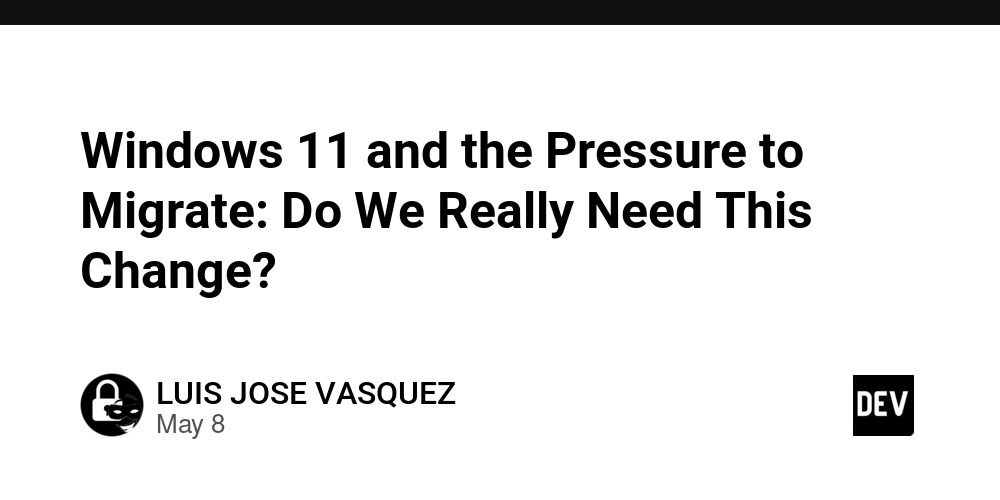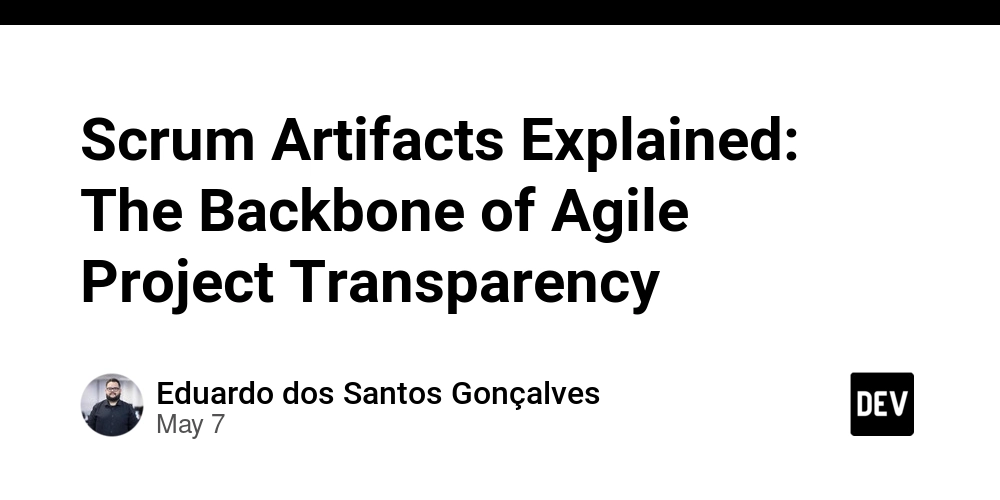Sustainable Funding for Open Source: Navigating Challenges and Emerging Innovations
Abstract This post explores the critical issue of sustainable funding for open source projects. We dive into historical challenges, innovative funding strategies, and future trends that aim to support the collaborative spirit of open source development. Using examples from corporate sponsorships, non-profit foundations, crowdfunding methods, subscription models, government grants, and commercialization, the article provides a comprehensive view of how these diverse approaches are reshaping the OSS ecosystem. We also include practical tools, tables, and bullet lists to make the discussion accessible for developers, business leaders, and technical enthusiasts. Links to authoritative sources such as GitHub Sponsors, Apache Software Foundation, and various community-driven insights underscore the importance of financial backing for open source sustainability. Introduction Open source software (OSS) forms the very backbone of modern digital infrastructure by powering websites, applications, and critical tools that developers use every day. Yet, roots of many widely used OSS projects lie in communities of unpaid volunteers. This model, while fostering innovation and collaboration, has also resulted in sustainability challenges—chief among which is securing consistent funding for maintenance and further development. As open source contributions become more central to technological progress, the conversation around sustainable funding strategies has become more urgent than ever. In today’s post, we explore funding challenges and innovative financial models that are emerging to support open source projects. With contributions from corporate giants, non-profit organizations, and even government entities, sustainable funding is increasingly seen as a multi-stakeholder endeavor. Furthermore, with blockchain technology and novel sponsorship models gaining traction, the future of OSS funding is set to be both dynamic and inclusive. Background and Context The Evolution of Open Source Funding Historically, open source emerged as an altruistic sharing model where individuals contributed code without direct monetary compensation. Over time, projects like Apache and Linux Foundation have demonstrated that pooling resources can help maintain and secure widespread OSS usage. However, reliance on unpaid volunteer work (see unpaid volunteer work) often led to burnout among maintainers and a lack of steady support. Definitions and Ecosystem Context Understanding sustainable funding in OSS means recognizing the ecosystem involves various stakeholders, including: Developers: Who dedicate their time and expertise. Corporations: That rely on OSS for their operations and contribute through sponsorships. Non-profit Foundations: That manage donation pools and funding programs. Governments: Which provide grants and regulatory support for technological innovation. This ecosystem is critical for ensuring projects are continuously maintained, updated, and secure. The open source community has learned valuable lessons from traditional business models and adapted them to the decentralized nature of OSS. Core Concepts and Features Sustainable funding strategies are emerging as a solution to challenges inherent in the open source development model. Below is a table summarizing several core funding approaches and their key features: Funding Strategy Key Features Examples/Platforms Corporate Sponsorships Direct monetary contributions, matching funds, long-term support GitHub Sponsors, OpenCollective Non-Profit Foundations Grants, pooled resources, infrastructure support Apache Software Foundation, Linux Foundation Crowdfunding Community donations for specific milestones, democratized funding Kickstarter, Patreon Subscription-Based Models Hybrid service offerings with premium support and services GitLab Pricing Government Grants Public funding for critical infrastructure and innovation European Commission Open Source Commercialization Blending free OSS with enterprise-grade paid services Red Hat, consulting, training, licensing Corporate Sponsorships Many companies that depend on OSS contribute financially so that the projects remain robust. Examples like Google and Microsoft have shown that corporate sponsorship is not only beneficial for maintainers but also for companies that rely on reliable software. The corporate sponsorship model moves away from traditional ad-based revenue generation, fostering a direct relationship between the sponsor and the developer community. Non-Profit Foundations Foundations such as the Apache Software Foundation and Linux Foundation play an instrumental role by pooling donation resources and providing administrative, legal, and technical support. These organizations ensure that despite the often decentralized nature of OSS, a central governance framework exists to oversee pro

Abstract
This post explores the critical issue of sustainable funding for open source projects. We dive into historical challenges, innovative funding strategies, and future trends that aim to support the collaborative spirit of open source development. Using examples from corporate sponsorships, non-profit foundations, crowdfunding methods, subscription models, government grants, and commercialization, the article provides a comprehensive view of how these diverse approaches are reshaping the OSS ecosystem. We also include practical tools, tables, and bullet lists to make the discussion accessible for developers, business leaders, and technical enthusiasts. Links to authoritative sources such as GitHub Sponsors, Apache Software Foundation, and various community-driven insights underscore the importance of financial backing for open source sustainability.
Introduction
Open source software (OSS) forms the very backbone of modern digital infrastructure by powering websites, applications, and critical tools that developers use every day. Yet, roots of many widely used OSS projects lie in communities of unpaid volunteers. This model, while fostering innovation and collaboration, has also resulted in sustainability challenges—chief among which is securing consistent funding for maintenance and further development. As open source contributions become more central to technological progress, the conversation around sustainable funding strategies has become more urgent than ever.
In today’s post, we explore funding challenges and innovative financial models that are emerging to support open source projects. With contributions from corporate giants, non-profit organizations, and even government entities, sustainable funding is increasingly seen as a multi-stakeholder endeavor. Furthermore, with blockchain technology and novel sponsorship models gaining traction, the future of OSS funding is set to be both dynamic and inclusive.
Background and Context
The Evolution of Open Source Funding
Historically, open source emerged as an altruistic sharing model where individuals contributed code without direct monetary compensation. Over time, projects like Apache and Linux Foundation have demonstrated that pooling resources can help maintain and secure widespread OSS usage. However, reliance on unpaid volunteer work (see unpaid volunteer work) often led to burnout among maintainers and a lack of steady support.
Definitions and Ecosystem Context
Understanding sustainable funding in OSS means recognizing the ecosystem involves various stakeholders, including:
- Developers: Who dedicate their time and expertise.
- Corporations: That rely on OSS for their operations and contribute through sponsorships.
- Non-profit Foundations: That manage donation pools and funding programs.
- Governments: Which provide grants and regulatory support for technological innovation.
This ecosystem is critical for ensuring projects are continuously maintained, updated, and secure. The open source community has learned valuable lessons from traditional business models and adapted them to the decentralized nature of OSS.
Core Concepts and Features
Sustainable funding strategies are emerging as a solution to challenges inherent in the open source development model. Below is a table summarizing several core funding approaches and their key features:
| Funding Strategy | Key Features | Examples/Platforms |
|---|---|---|
| Corporate Sponsorships | Direct monetary contributions, matching funds, long-term support | GitHub Sponsors, OpenCollective |
| Non-Profit Foundations | Grants, pooled resources, infrastructure support | Apache Software Foundation, Linux Foundation |
| Crowdfunding | Community donations for specific milestones, democratized funding | Kickstarter, Patreon |
| Subscription-Based Models | Hybrid service offerings with premium support and services | GitLab Pricing |
| Government Grants | Public funding for critical infrastructure and innovation | European Commission Open Source |
| Commercialization | Blending free OSS with enterprise-grade paid services | Red Hat, consulting, training, licensing |
Corporate Sponsorships
Many companies that depend on OSS contribute financially so that the projects remain robust. Examples like Google and Microsoft have shown that corporate sponsorship is not only beneficial for maintainers but also for companies that rely on reliable software. The corporate sponsorship model moves away from traditional ad-based revenue generation, fostering a direct relationship between the sponsor and the developer community.
Non-Profit Foundations
Foundations such as the Apache Software Foundation and Linux Foundation play an instrumental role by pooling donation resources and providing administrative, legal, and technical support. These organizations ensure that despite the often decentralized nature of OSS, a central governance framework exists to oversee project health and stability.
Crowdfunding
Crowdfunding campaigns have become popular ways to fund new features or address specific challenges in open source projects. Platforms like Kickstarter and Patreon allow developers to present clear, short-term goals. This model helps create a direct connection between the OSS development team and its vital community. Additionally, crowdfunding can cover unanticipated expenses, such as emergency security fixes.
Subscription-Based Models
Subscription models offer a unique blend where basic functionality is available for free, while added-value services like dedicated support or hosted solutions are offered for a fee. This hybrid approach enables projects to serve both individual developers and corporate clients who need level-2 support. For instance, GitLab leverages this model to provide enhanced features while keeping the core platform open source.
Government Grants and Commercialization
In recognition of its importance, governments have stepped in to provide grants and support. These funds are usually directed toward projects with high societal impact. Commercialization, on the other hand, uses OSS as a foundation to offer proprietary services—exemplified by Red Hat—thus fueling further investment in OSS development.
Applications and Use Cases
Sustainable funding models have practical applications across multiple domains. Consider the following examples:
Enterprise Cloud Services:
Companies utilizing open source cloud infrastructure benefit from sponsorships that ensure their tools stay secure and update regularly. For example, enterprises rely on projects maintained by experts who receive direct support through GitHub Sponsors. This approach secures ongoing improvements and rapid fixes.Non-Profit and Government Projects:
Open source projects in the public sector—used to build civic infrastructure or educational tools—benefit from government grants. This funding guarantees that a project addressing public welfare remains up-to-date and free from vulnerabilities. The European Commission Open Source initiative is a prime example.Hybrid Business Models:
Many start-ups combine open source technology with commercial services. For instance, subscription-based models allow developers to use free software while businesses pay for premium support. This model preserves the open source ethos while generating sustainable revenue for ongoing development.
Below is a bullet list highlighting key benefits of sustainable funding for open source projects:
- Enhanced Security: Regular maintenance and quick updates mitigate risks.
- Innovation Acceleration: Reliable funding allows for experimentation and rapid feature development.
- Community Growth: Financial incentives contribute to contributor retention.
- Economic Stability: Diversified funding avenues reduce reliance on a single source.
- Increased Collaboration: A well-funded ecosystem encourages more partnerships and shared learning.
Challenges and Limitations
While many innovative funding models have emerged, several challenges remain:
Fragmented Revenue Streams:
Open source contributors often depend on varied sources of funding across multiple platforms. This fragmentation can make financial planning challenging.Sustainability of Crowdfunding:
Crowdfunding, while democratic, can be unpredictable. Once initial goals are met, long-term maintenance funding can become sparse.Balancing Free and Commercial Models:
Projects using subscription-based models must balance the open source philosophy with corporate interests. This balance is sometimes hard to strike without alienating parts of the community.Dependency on Corporate Sponsors:
Overreliance on a few major corporations can compromise project neutrality and may result in prioritizing corporate needs over the community’s.Limited Public Awareness:
Many end-users are unaware of the effort and resources needed to maintain open source tools. This lack of understanding can impede the flow of donations and support.
Dev.to posts such as Funding Open Source Software: Bridging Blockchain, NFTs and Sustainable Development have highlighted these challenges, reminding us that strategic planning and communication are key to overcoming them.
Future Outlook and Innovations
The future of sustainable funding for open source is bright, driven by technological advancements and community-led innovations. Some trends emerging in this space include:
Blockchain and Tokenization:
Blockchain technology offers transparent and verifiable funding platforms. Solutions like blockchain-based sponsorship models can tokenize contributions and create a sustainable rewards system for developers. Innovative models, such as those discussed in Blockchain for Open Source Funding: A New Paradigm, are paving the way for decentralized finance integration into OSS projects.Enhanced Corporate Social Responsibility (CSR):
As global corporations look to improve their CSR profiles, more companies are likely to increase their funding for open source initiatives, viewing these contributions as investments in a robust digital ecosystem.Automated Financial Management Tools:
As OSS projects grow, tools that help track and manage funding may become prevalent. These tools could range from dashboards that display real-time sponsorship contributions to AI-driven forecasting models for project budgets.Integration of NFTs and Digital Ownership:
Some innovative projects are linking OSS contributions with NFT rewards to recognize and monetize developer efforts. This new approach not only provides financial backing but may also boost community engagement by offering verifiable digital assets.Increased Government Involvement:
With governments recognizing the importance of OSS, more public funds may be allocated towards open source research and project development. This trend could lead to greater collaboration between public institutions and OSS communities.
A recent article on The Holistic Convergence of Blockchain, Open Source and License Compliance outlines how blockchain transparency could revolutionize accountability in OSS funding—a promising frontier for further innovation.
Structured Data Example
Below is an example table summarizing the challenges and proposed sustainable strategies:
| Challenge | Proposed Strategy | Expected Outcome |
|---|---|---|
| Fragmented Revenue Streams | Consolidate funding dashboards; use blockchain | More predictable budgeting |
| Sustainability Concerns | Diversify funding sources (corporate, crowdfunding, grants) | Stable long-term growth |
| Community Engagement | Incentivize contributions with token rewards | Increased contributor retention |
| Balancing Economic Models | Transparent governance policies | Greater community trust and support |
Additional Insights and Community Perspectives
Developers and contributors have shared insights through various community posts. For instance, articles on Dev.to such as Empowering Innovation: The Role of Open Source Project Sponsorship Platforms and Open Source Developer Compensation Plans: Navigating Rewards in Collaborative Code provide practical tips on managing finances and garnering support in a highly decentralized environment. These articles underscore the importance of clear communication and financial planning.
It is essential for developers to be proactive. Consider the following steps to secure funding:
- Leverage multiple platforms: Utilize GitHub Sponsors along with OpenCollective to broaden funding sources.
- Engage the community: Create transparent communication channels so that the community understands the funding needs and progress of the project.
- Apply for grants and government programs: Explore opportunities such as those offered by the European Commission’s open source initiative.
These steps not only help ensure project sustainability but also foster community loyalty and trust.
Key Takeaways
- Sustainable Funding is Multi-Faceted: From corporate sponsorships and non-profit foundations to crowdfunding and subscription models, funding strategies are diverse and complementary.
- Emerging Technologies are Paving the Way: Blockchain, tokenization, and digital asset integration (e.g., NFTs) are creating innovative ways to support and reward open source contributions.
- Community Engagement is Crucial: Transparent communication and proactive outreach are essential to maintain momentum and support for OSS projects.
- Integration with Government and Corporate Interests: Effective partnerships with corporations and governments can greatly enhance project stability and expansion.
Summary
Sustainable funding for open source is not merely a financial challenge—it is about preserving the collaborative and innovative spirit that underpins a vast array of digital technologies. By integrating traditional sponsorships, government grants, and innovative mechanisms like blockchain and NFTs, the industry can overcome funding fragmentation and ensure that open source projects remain vibrant and secure.
As this post has detailed, the ecosystem for OSS funding involves multiple stakeholders: corporate giants, non-profit foundations, crowdfunding platforms, and increasingly, government initiatives. With a robust set of strategies, ranging from corporate sponsorships (GitHub Sponsors) to non-profit oversight (Apache Software Foundation), OSS projects can better navigate the financial challenges they face.
In harnessing emerging trends and tools, developers can look forward to a future where the innovative drive behind open source is continuously nurtured by a diversified, sustainable funding model. For further reading on these transformative ideas, take a look at the insights shared in Empowering Innovation: The Role of Open Source Project Sponsorship Platforms and Funding Open Source Software: Bridging Blockchain, NFTs and Sustainable Development.
Ultimately, investing in sustainable funding is investing in the future of innovation. It ensures that the technology we rely on remains secure, continuously updated, and capable of driving the next wave of digital transformation. This diverse and evolving approach to funding is not just beneficial—it is essential for the long-term health and growth of open source software.
As we continue to explore these new frontiers, let us remember that sustainable funding is the foundation that will empower OSS communities, foster consistent development, and drive forward the digital solutions that shape our world.











































































































































































![[The AI Show Episode 146]: Rise of “AI-First” Companies, AI Job Disruption, GPT-4o Update Gets Rolled Back, How Big Consulting Firms Use AI, and Meta AI App](https://www.marketingaiinstitute.com/hubfs/ep%20146%20cover.png)



























































































































![[FREE EBOOKS] Offensive Security Using Python, Learn Computer Forensics — 2nd edition & Four More Best Selling Titles](https://www.javacodegeeks.com/wp-content/uploads/2012/12/jcg-logo.jpg)



![Ditching a Microsoft Job to Enter Startup Purgatory with Lonewolf Engineer Sam Crombie [Podcast #171]](https://cdn.hashnode.com/res/hashnode/image/upload/v1746753508177/0cd57f66-fdb0-4972-b285-1443a7db39fc.png?#)






























































































































































































































-xl.jpg)












![As Galaxy Watch prepares a major change, which smartwatch design to you prefer? [Poll]](https://i0.wp.com/9to5google.com/wp-content/uploads/sites/4/2024/07/Galaxy-Watch-Ultra-and-Apple-Watch-Ultra-1.jpg?resize=1200%2C628&quality=82&strip=all&ssl=1)













![Beats Studio Buds + On Sale for $99.95 [Lowest Price Ever]](https://www.iclarified.com/images/news/96983/96983/96983-640.jpg)

![New iPad 11 (A16) On Sale for Just $277.78! [Lowest Price Ever]](https://www.iclarified.com/images/news/97273/97273/97273-640.jpg)








































![Apple's 11th Gen iPad Drops to New Low Price of $277.78 on Amazon [Updated]](https://images.macrumors.com/t/yQCVe42SNCzUyF04yj1XYLHG5FM=/2500x/article-new/2025/03/11th-gen-ipad-orange.jpeg)



![[Exclusive] Infinix GT DynaVue: a Prototype that could change everything!](https://www.gizchina.com/wp-content/uploads/images/2025/05/Screen-Shot-2025-05-10-at-16.07.40-PM-copy.png)






![T-Mobile discontinues a free number feature but a paid alternative exists [UPDATED]](https://m-cdn.phonearena.com/images/article/170235-two/T-Mobile-discontinues-a-free-number-feature-but-a-paid-alternative-exists-UPDATED.jpg?#)

















































